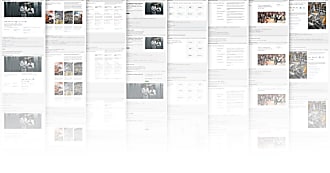Carla Berkers
on 20 May 2014
As the number of Juju users has been rapidly increasing over the past year, so has the number of new solutions in the form of charms and bundles. To help users assess and choose solutions we felt it would be useful to improve the visual presentation of charm and bundle details on manage.jujucharms.com.
While we were in Las Vegas, we took advantage of the opportunity to work with the Juju developers and solutions team to find out how they find and use existing charms and bundles in their own deployments. Together we evaluated the existing browsing experience in the Juju GUI and went through JSON-files line by line to understand what information we hold on charms.
We used post-its to capture every piece of information that the database holds about a bundle or charm that is submitted to charmworld.
We created small screen wireframes first to really focus on the most important content and how it could potentially be displayed in a linear way. After showing the wireframes to a couple more people we used our guidelines to create mobile designs that we can scale out to tablet and desktop.
With the grouped and prioritised information in mind we created the first draft of the wireframes.
In order to verify and test our designs, we made them modular. Over time it will be easy to move content around if we want to test if another priority works better for a certain solution. The mobile-first approach is a great tool for making sense of complex information and forced us to prioritise the content around user’s needs.
First version designs.






